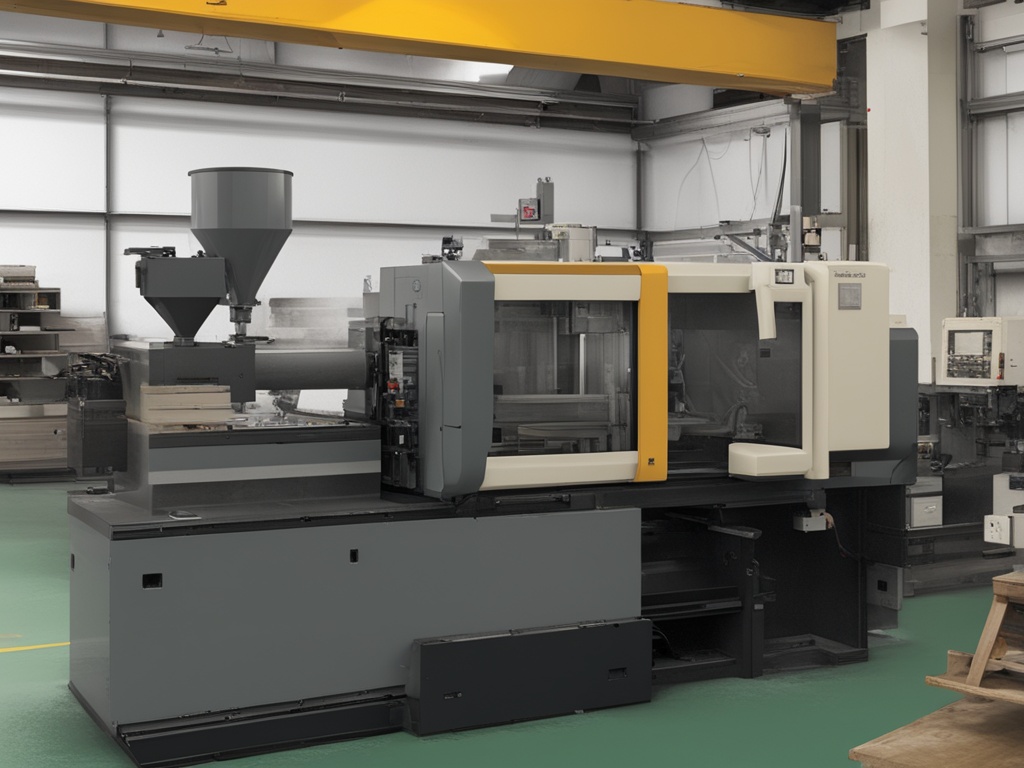**The Evolution and Applications of the Plastic Injection Molding Press**
**Abstract**

This article delves into the world of plastic injection molding presses, exploring their history, evolution, and diverse applications across multiple industries. We delve into the technology's working principles, discuss its various advantages and challenges, and outline its future prospects.
**1. Introduction**
Plastic injection molding, a crucial process in the manufacturing industry, has revolutionized the way we produce plastic parts and components. The plastic injection molding press, a vital component of this process, has enabled the mass production of precise, durable, and cost-effective plastic products.
**2. Working Principles of Plastic Injection Molding Press**
A plastic injection molding press operates by injecting molten plastic into a mold cavity under high pressure. The plastic is fed into the press through a hopper and then heated to its melting point. Once molten, the plastic is injected into the mold cavity, where it cools and solidifies to form the desired shape. The mold is then opened, ejecting the finished part, and the cycle repeats.
**3. Evolution of the Plastic Injection Molding Press**
The evolution of the plastic injection molding press can be traced back to the early 20th century. Initial machines were basic and produced limited quantities of crude parts. Over time, technology advanced, leading to more sophisticated machines with greater precision and efficiency. Modern presses are now equipped with advanced features such as servo-driven systems, closed-loop controls, and intelligent automation, enabling them to produce complex parts with unmatched precision and speed.
**4. Applications of Plastic Injection Molding Press**
The plastic injection molding press finds applications across various industries, including automotive, electronics, packaging, medical, and consumer goods. It is used to produce a wide range of products, from small components like buttons and fasteners to large, complex parts like dashboards and housings. The versatility and scalability of the plastic injection molding process make it an ideal choice for diverse manufacturing needs.
**5. Advantages of Plastic Injection Molding Press**
The plastic injection molding press offers several advantages, including:
* **High Production Rates**: Modern presses can produce hundreds of parts per hour, making them suitable for mass production.
* **Precision and Consistency**: The process allows for precise control of part dimensions, ensuring consistent quality and fit.
* **Material Efficiency**: The molding process wastes little material, leading to cost savings and reduced environmental impact.

* **Versatility**: The presses can handle a wide range of plastics, allowing for the production of parts with different properties and appearances.
* **Design Flexibility**: The molds can be easily modified, enabling quick changes in part design.
**6. Challenges and Limitations**
Despite its advantages, the plastic injection molding process also faces some challenges and limitations:
* **High Initial Investments**: Setting up a plastic injection molding operation requires significant capital investment in equipment, molds, and other infrastructure.
* **Long Lead Times**: Designing and manufacturing molds can be a time-consuming process, affecting the time to market for new products.
* **Dependence on Raw Materials**: The process relies on a consistent supply of plastic resin, which can be affected by market fluctuations and supply chain issues.
* **Environmental Concerns**: The plastic injection molding process generates waste and requires energy-intensive operations, raising concerns about its environmental impact.
**7. Future Prospects**
The future of the plastic injection molding press looks bright, with advancements in technology driving further improvements. Innovations such as additive manufacturing, digital twins, and Industry 4.0 technologies are expected to revolutionize the industry, improving efficiency, reducing waste, and enabling more sustainable production methods.
**8. Conclusion**
The plastic injection molding press has come a long way since its inception, evolving into a highly advanced and versatile machine. Its ability to produce precise, cost-effective plastic parts in large volumes has made it a crucial component of modern manufacturing. While the process faces some challenges, its many advantages and the promise of future technology advancements suggest that the plastic injection molding press will continue to play a pivotal role in shaping the manufacturing landscape.




 13869596835
13869596835